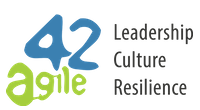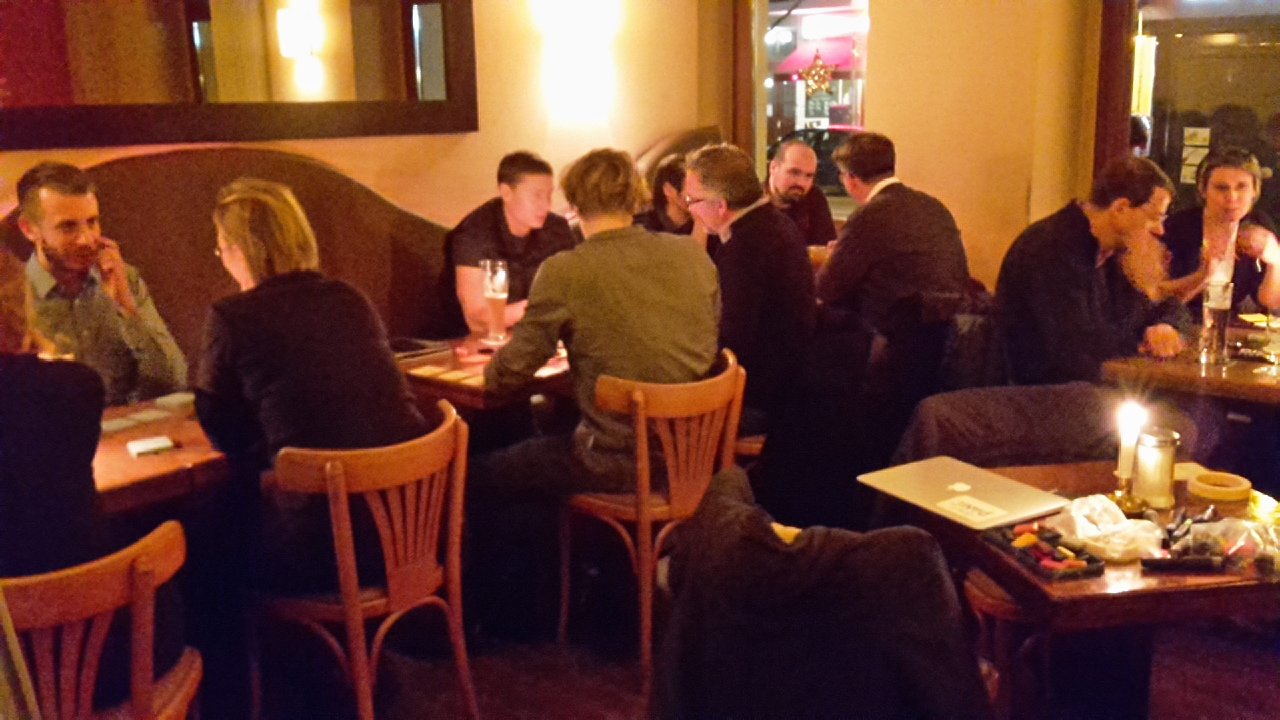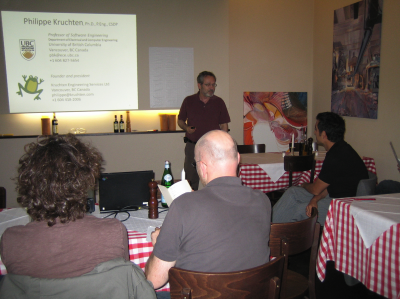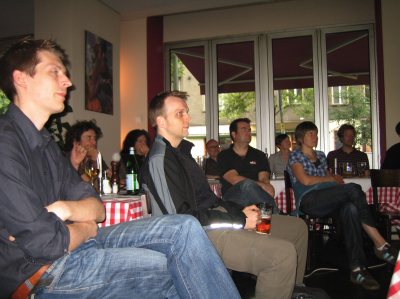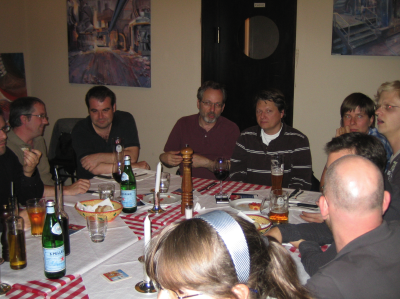Scrumtisch with Lyssa Adkins 2011
The February Scrumtisch Berlin featured a talk by Lyssa Adkins, famously known for her publications on Coaching Agile teams. A mixture of fifty developers, scrum masters, coaches and product owner as well as one project manager followed Marion Eickmann’s invitation. Thanks for organising the event, as well as thank you to Hypoport, Berlin for providing the venue.
In her one-hour presentation she mainly focussed on two core topics: On the roles agile coaches have to fullfill as well as on the skill set needed by agile coaches. Being an agile coach (as well as being a scrum master, really), entails four very basic roles:
Being a bulldozer…
…that is getting impediments out of the way. That can be as easy (or hard) as getting appropriate equipment for your developers or teaming up with the product owner to communicate with anyone trying to break the sprint.
Being a servant leader…
…for a coach that means to work for the team, to ask the right questions and enable the team, to listen during dailies – instead of asking for additional reports: Most tools are already within the Scrum toolbox. The hard task is to identify them and use them correctly and efficiently.
Being a shepherd…
…that may be as easy as getting people to attend the dailies, or as complex as communicating common values, a common goal.
Being the guard of quality and performance…
…as a coach that means making degrading quality visible – and letting the Scrum team take the decision on how to deal with it.
However in reality each team is different, each sprint is different. So coaching really is similar to bing the river guide: Each trip is different. It is your task to make the team succeed and adapt to differing situations. To get to team to high performance – over and over again.
When talking about coaching what people need is a very specific skill set:
- To become a successful agile coach it helps to have coaching skills to be able to understand the client, to see their impediments and help the team become better by listening and asking powerful questions.
- Be a facilitator who organises sessions, meetings, conversations and may mediate in meetings.
- Have business domain expertise – that is to know process designs, figure out a companies strategy options.
- Be a great teacher to help people understand the basic concepts. That entails knowledge on course design, most likely design of exercises.
- Have mentoring skills to guide a team in the process.
- Know about lean and agile processes and stay up to date.
- Have the technical skills on what makes development successful, know the extreme programming techniques to help team excel.
- Have transformational skills – that is be familiar with change management, transformation leadership, knowing how to change organisations.
However being a coach remember that people are influenced not only by what you teach – but mostly by what you do. Most of what being a good coach means is invisible to the uninitiated outsider. It’s about living the process you teach, staying true to the principles you want others to implement.
To get there it helps to get inspired, to talk with others in local meetups (just as with any coding practice: Try to find a common forum to exchange ideas and get fresh input). It may help to keep a value journal – not only to track your accomplishments and be able to prove them to higher management, but also to track where to improve yourself.
The talk provided several interesting starting points for exploring further. However with an added exercise sixty minutes covered only the very basic ideas. Especially for the skill sets needed to successfully coach teams it would be very interesting to learn more on what books to read or what courses to attend to learn more on each topic. Ultimately not only agile coaches benefit from being great teachers, mentors or facilitators.
